The views expressed here are solely those of the author and do not necessarily represent the views of FreightWaves or its affiliates.
Ever check out the list prices of brand-new main line diesel-electric locomotives? They are expensive – about $3 million each.
People get mesmerized by the horsepower quoted. Nah! You want pulling power – and less top-end speed. Speed is what you require horsepower for. But dragging heavy long freight trains is the North American business model. You need to purchase tractive effort.
There are cheaper capital outlay ways to buy train locomotives. The lower cost option involves stripping down older units that have good frame conditions and rebuilding them as upgrades. It usually begins by selecting a locomotive that is about 20 years old.
Here are the simple economics that drive the program. This modernization business model started to evolve about a decade ago.
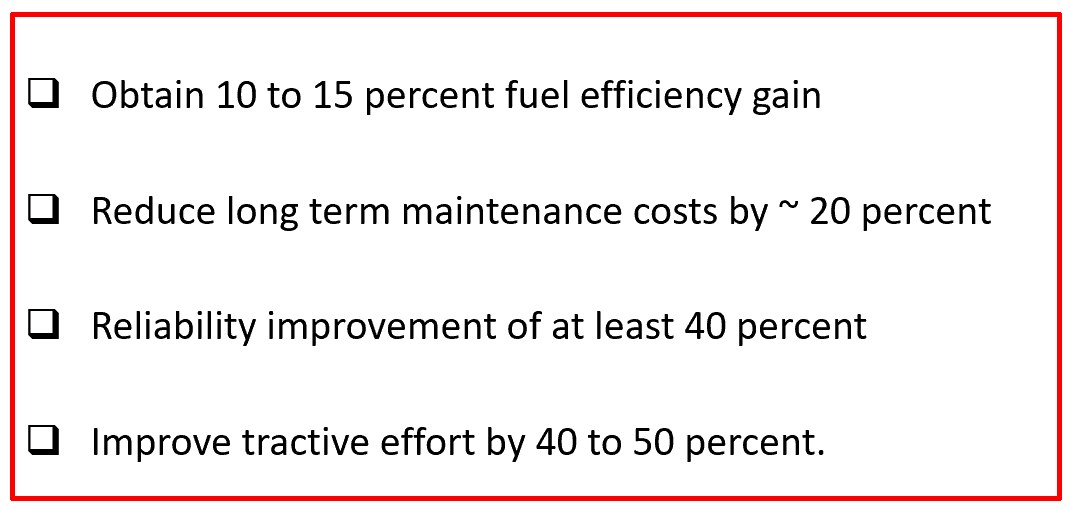
Locomotive rebuilding is no small task. A typical locomotive is more than 73 feet long, about 16 feet tall and weighs as much as 426,000 pounds.
There may be as many as 210,000 parts inside a locomotive, including more than six miles of wiring.
One critical aspect of rebuilding is to use modular construction techniques (like assembling Lego blocks of parts).
Most rebuilding involves five main sub-assemblies modules. Each is pre-assembled and tested on its own assembly line; and then moved around the factory with a network of heavy-duty overhead cranes.

(Photo: Jim Blaze/FreightWaves)
That remanufacturing process begins with a complete tear-down of the older body and its component parts.
Overhaul activity takes place in the same general plant assembly area as where some of the original equipment manufacturers (OEMs) build new locomotives. However, there is some floor reconfiguring.
New locomotive manufacturing typically flows in one direction on the final assembly line.
For a modernization, arriving older locomotives are initially washed and drained of fluid. Then they are completely stripped. Even the wiring is replaced.
Skilled crews remove the cab, the wheel trucks, the diesel and electrical motors and other parts. Employees then sand off old paint and check for and repair any signs of corrosion.
If possible, the modernization process tries to retain the flat original platform of the locomotive (think of it as a chassis) that is fabricated from about 80,000 pounds of structural steel. This platform will sit upon a pair of three-axle trucks. The bottom chassis will also hold underslung fuel tanks.
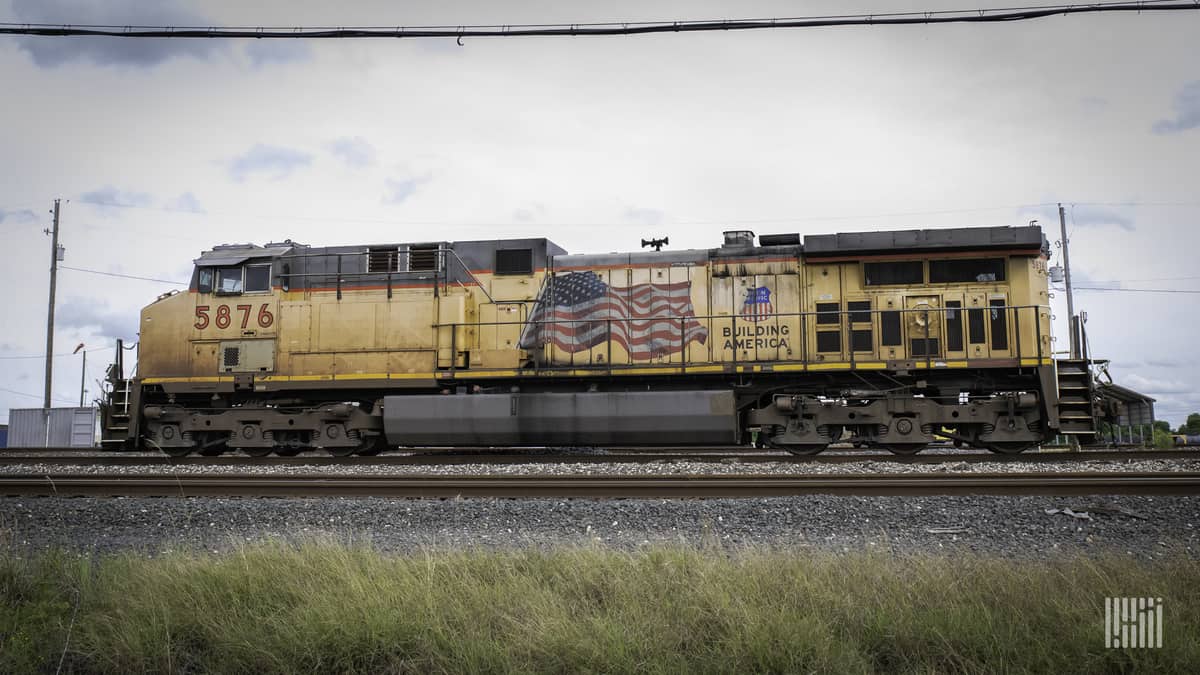
(Photo: Jim Allen/FreightWaves)
Before subassembly begins, they check and recheck to ensure that parts “fit.”
For comparison, here are several different baseline OEM locomotive types which may be candidates for modernization.
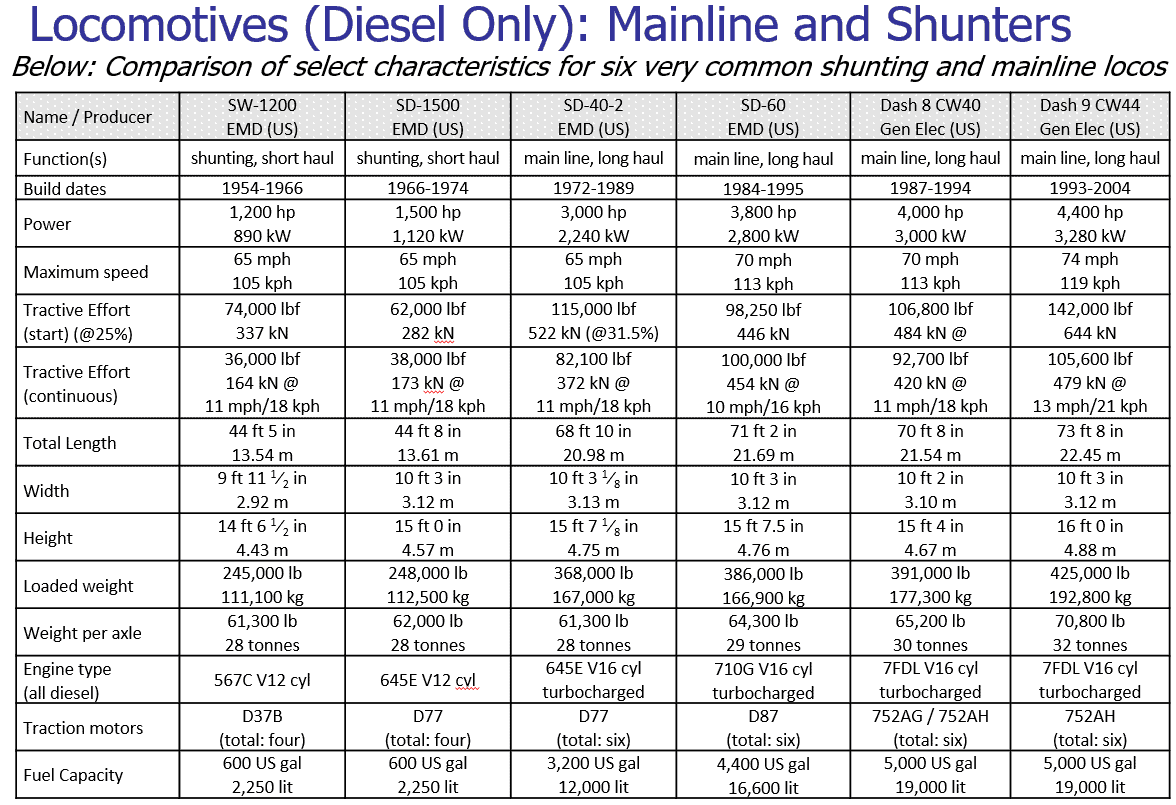
The order of rebuild assembly is typically the auxiliary cab, followed by main cab, and then adding radiator units, the remanufactured engine, the blower cab and finally the engine cab.
Rebuilding a locomotive can take as many as eight to nine weeks.
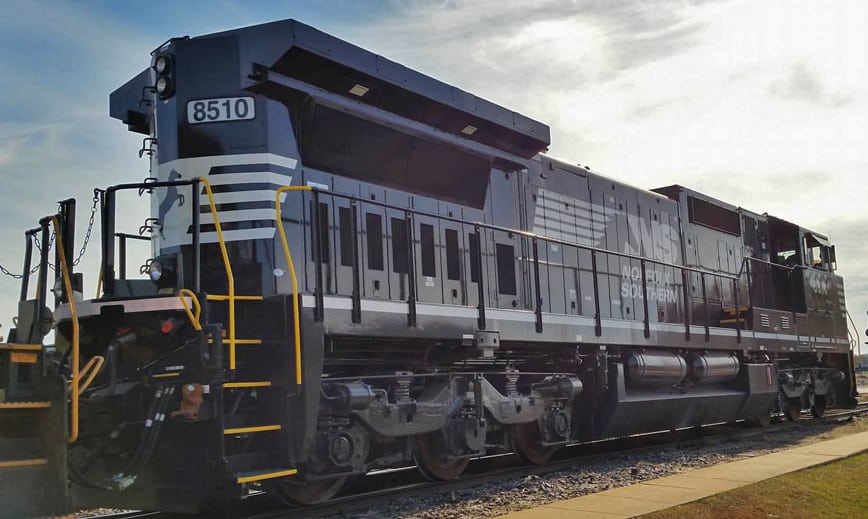
in North Carolina in 2016.
(Photo: Junior Tillman/NSDash9.com)
There are regulatory rules that determine how a unit is rebuilt. Specifically, U.S. Environmental Protection Agency federal pollution rules apply.
The EPA also mandates that locomotive upgrades can’t exceed more than 50% of a locomotive’s value. Therefore, most locomotive rebuilds are fitted with a remanufactured engine instead of a new one.
Engine preservation and reuse is a special role for companies like National Railway Equipment (NRE).
NRE crews remove the old engine from the locomotive and then employ special machinery that restores all dimensions of the original diesel engine. This includes power assembly, heads, liners and pistons.
NRE remanufacturing “essentially like new” helps meet the EPA “parts content” standards.
Here are the environmental rules that are important based upon a REF20 recent rail equipment presentation by NRE experts.
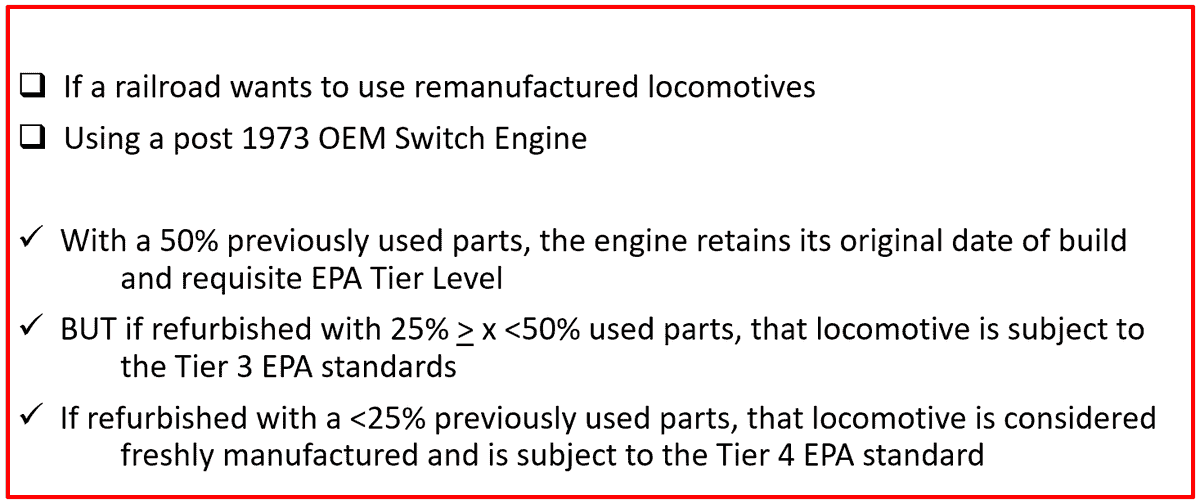
Which railroads have used locomotives in good condition for rebuilding?
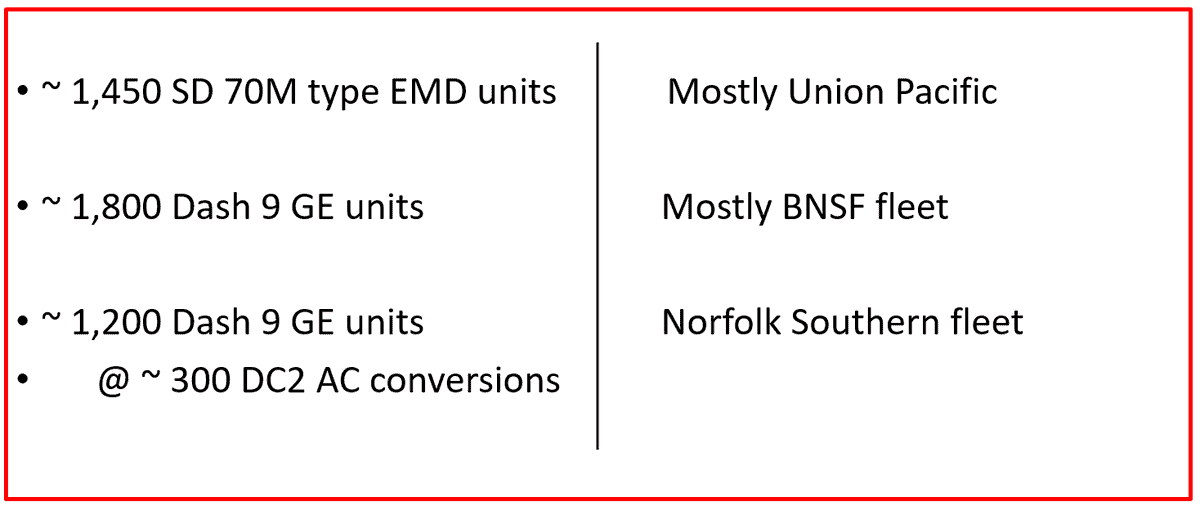
Another critical part of an upgrade involves switching out the traction motors that deliver power to the locomotive drive wheels.
One of the ways to obtain higher productivity is to convert the older units direct current (DC) motors to an alternating current (AC) technology. AC motors give the engineer more control over the wheels. That control improves locomotive steel wheel adhesion to the steel rails by reducing wheel slip. Also, AC technology is heat-resistant – and has a much longer service life before failure or repair. In a DC-to-AC modernization, the locomotive will receive new “trucks.”
The modernization also improves the crew cab controls and digital technology. This can include upgraded Positive Train Control (PTC) in-cab units and communications modules that connect with a rail company’s remote train dispatching centers.
Here is the current mid-May outlook for 2020. New locomotive orders will be depressed. It’s possible that fewer than 100 new units will be delivered.
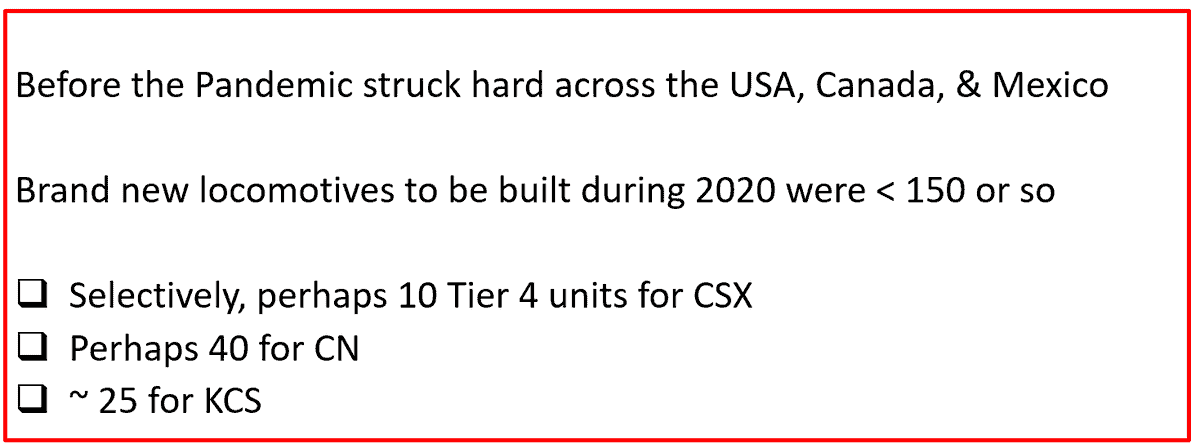
However, selective rebuilding/modernization will continue – albeit at perhaps a 25% lower rate than budgeted for the year as the railroad boards of directors approved their Class I railroad capital budgets at year’s end 2019.
Remanufacturing costs are about 50 to 60% of the costs of a new locomotive. Those savings are meaningful.
The end result is a lower capital recovery cost and an improved operating ratio.
This capital approach supports the return on asset goals of today’s precision scheduled railroad (PSR) business model: “Save more than a third of the investment cost”
Here are a few recent rebuild examples.
The BNSF AC44C4M is a GE C44-9 rebuilt with AC traction motors. The internal controls are like those of the newer GE ES44C4 – at a cheaper price.
Norfolk Southern already has about 160 of its Dash 9-44CW units upgraded to an AC rebuilt power series of the “AC44C6M” type. This program is expected to continue into year 2023. But, check the second quarter NS investment report for an update sometime in July.
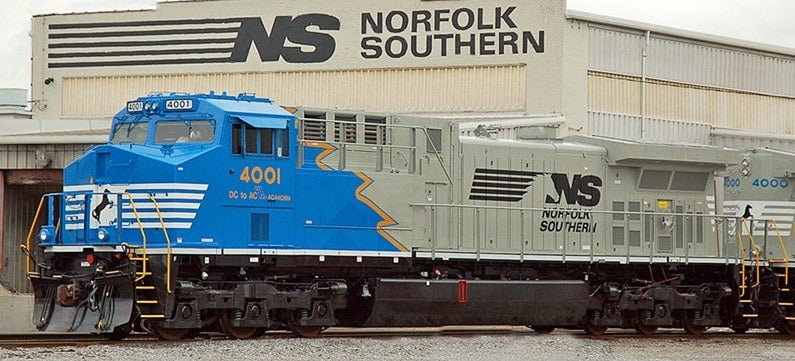
(Photo: Mike Ray)
What’s not to like? What are your thoughts? Is the modernization of old locomotives part of your business model?
Acknowledgements
Austin Weber – “GE Stays on Track by Rebuilding Locomotives,” published by ASSEMBLY (August 1, 2018).








Stephen Richard
Jim I wanted to say that through buying rebuilt two trains my 75 year old father worked with that were purchased new in 1979 and 1980 are still active in service to this day. Kcnw #1 and #2 ,were coal mine trains till the mine closed in 1994 left for ARR because arr1553 1554 now serves as gmtx205 and 206.
Jim Blaze
Cool! Thanks for sharing that memory Sephen.
Jim